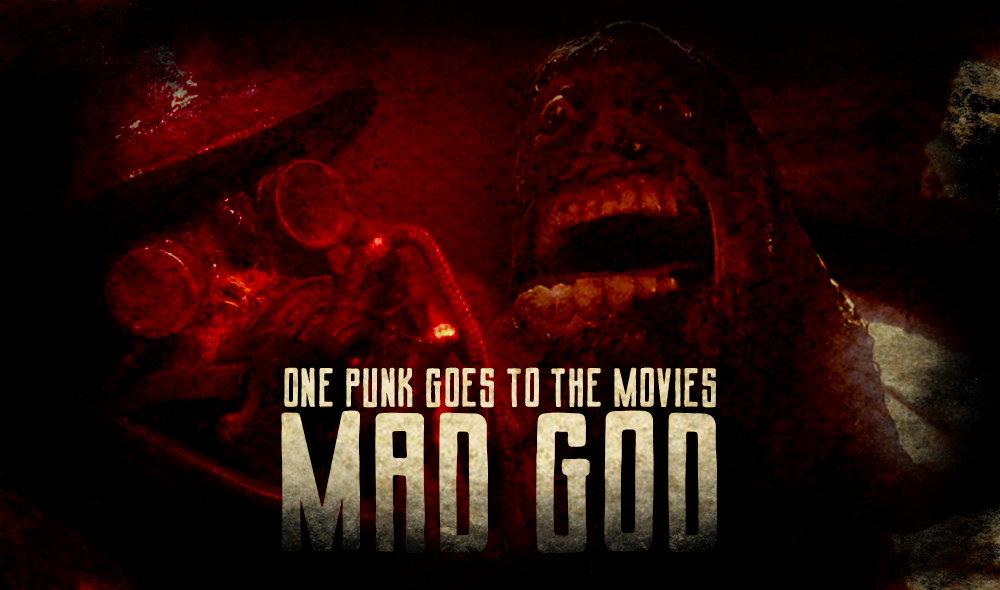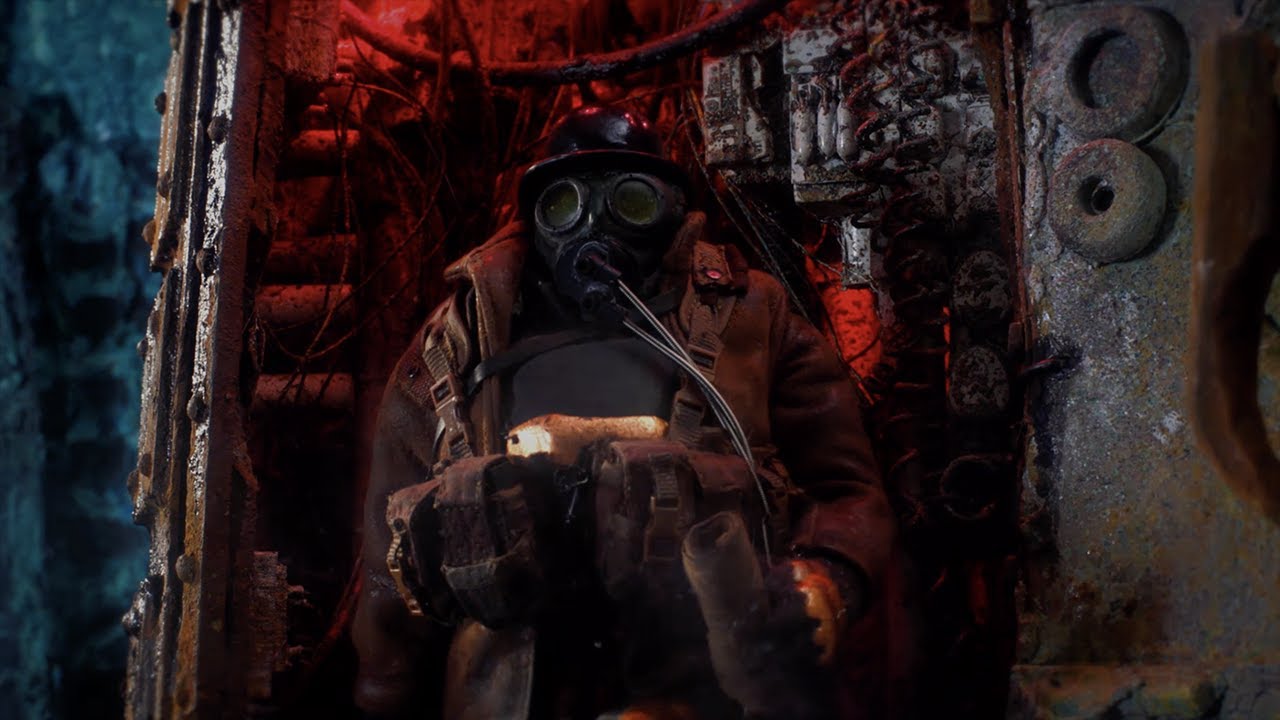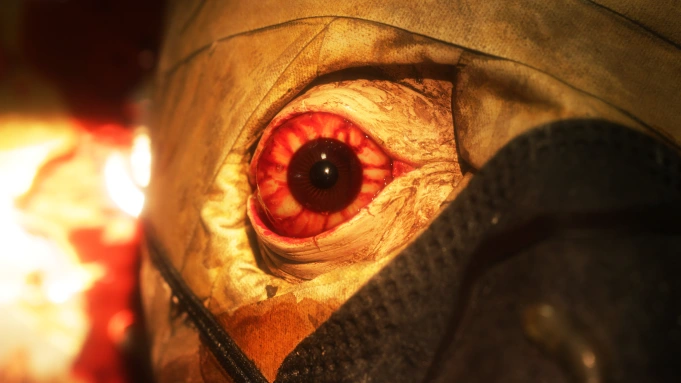One Punk Goes to the Movies: The Beautiful Brutality of “Mad God” or Phil Tippett: The Most Creative Person in Hollywood You’ve Never Heard


“If it can be written, or thought, it can be filmed.”
–Stanley Kubrick
In 1895, director Alfred Clark chopped off the head of a Shakespearean-trained actor named Robert L. Thomae in an eighteen-second film called The Execution of Mary Stuart. This marvel of cinematic savagery was achieved through a new technique called the “stop trick,” a clever new device that shocked and mesmerized audiences around the world.
Here’s how it worked:
As the executioner raised a giant ax high above his head, poised and ready to bring it down onto the prone neck of his victim, Clark called for the camera to stop. With everyone holding completely still, Thomae (the male actor portraying the female title character, as per Shakespearean tradition) left the shot and was replaced by a mannequin. With everything back in place, Clark called for the camera to roll once again, and poor Mary Stuart lost her head.
Voilá. Special effects.
Over the next twenty years, Clark’s technique would be refined and perfected by a French magician turned filmmaker named Georges Méliès, whose innovations in the field of special effects would become synonymous with art of cinematic fakery. Most notable among his many works is Le Voyage dans la Lune (or, A Trip to the Moon), a 1902 production in which a group of Earthlings crash land into the eyeball of the “man in the moon,” and are beset upon by a mysterious race of aliens who call the dark rock their home.
It was from these primitive beginnings that modern special effects were born, with the likes of Willis O’Brien (King Kong, 1933), Eiji Tsuburaya (Godzilla, 1954), Ray Harryhausen (Jason and the Argonauts, 1963, and Clash of the Titans, 1981), and on through modern greats like Stanley Kubrick, John Carpenter, George Lucas, and Steven Spielberg all drawing a direct lineage to the masters who came before them.
The importance of Clark, Méliès, Harryhausen, and other early innovators cannot be overstated, but there is one man who took the principles shared by these great artists to levels beyond what anyone thought possible. His name is Phil Tippett— and you’ve probably never heard of him before.

Remember the chess game between Chewbacca and R2-D2 in Star Wars? How about the Imperial Walkers and tauntauns in The Empire Strikes Back, or ED-209 in RoboCop? The dinosaurs in Jurassic Park? The bugs in Starship Troopers? Whether you recognize his name or not, you’ve likely spent half your life or more enjoying the many films Phil Tippett helped create. His fingerprints reach far and wide throughout the movie business, and many of the techniques he developed throughout his long career (most notably his “go motion” technique, which adds motion blur to animated sequences) are the same standard practices used today.
Bit by the animation bug after seeing 1958’s The 7th Voyage of Sinbad (effects by Ray Harryhausen), Phil Tippett broke into the business in a big way in 1975 when George Lucas asked him to create animated sequences for a little film he was working on called Star Wars. This led to his work on The Empire Strikes Back and 1981’s Dragonslayer, for which he was nominated for an Oscar but did not win. Return of the Jedi followed in 1983, this time securing Tippett his first of two Academy Awards for Best Visual Effects.
More work followed, but it would be Steven Spielberg’s 1993 blockbuster Jurassic Parkthat would cement Tippett’s name in the halls of special effects history. Originally slated to use stop-motion to animate the dinosaur sequences, Spielberg changed horses mid-stream, opting instead to go with the burgeoning CGI technology that was then being perfected by George Lucas’s Industrial Light & Magic.
Undaunted by the replacement of analog animation with a newer and flashier digital model, Tippett simply adapted his vast knowledge of techniques to the new technology and earned himself his second Oscar in the process.
Although he’d become a sought-after effects creator and supervisor for big-budget Hollywood blockbusters, in 1990 Tippett began work on an independent stop-motion animated film of his own. This labor of love began in earnest as he worked on RoboCop 2, but after the massive success of Jurassic Park and its revolutionary CGI dinosaurs, Tippett began to see stop-motion as a thing of the past, and so the film was shelved. His pet project would remain dormant for two decades.
Twenty years later, encouraged by friends and fellow animators, Tippett was coaxed into revisiting the very medium that inspired him to become an animator in the first place, and his near-forgotten feature-length animated film was dusted off and given another attempt at completion.

Over the next ten years, Tippett and a group of volunteers (aided by a successful Kickstarter campaign) spent their weekends tirelessly bringing the Oscar winner’s vision to life. The result of their efforts is Mad God, a richly detailed and incredibly savage experimental film on par with, or better than the best animated films ever produced. After thirty years, Phil Tippett had his movie.
The world of Mad God is one of indifferent cruelty, dystopian industrial waste, pointless servitude, sadistic torture, and never-ending conflict. It’s a world that tangentially resembles our own in that the symbols of war, religion, and imperialism haunt the ruined landscape like a familiar nightmare. But, despite the utterly repulsive nature of this macabre and ghastly place, it’s clear that this is no alien planet or alternate dimension—it’s a representation of the levels to which humanity has lowered itself, and the all-too-common detachment shown toward environmental destruction and an ever-increasing amount of planet-wide violence.
Drawing heavy influence from the paintings of Hieronymus Bosch and Zdzisław Beksiński (with a generous portion of Francisco Goya thrown in for good measure), Tippet has created a landscape in which our shared existential dread is made tangible and expressible. His is a world of the mind as much as it is a world of figurative or speculative prediction. Somehow, Tippet has tapped into the collective unconscious of everyone who’s ever felt the world spiraling out of control, and visually depicted what that might look like if the human brain could project an image onto a screen. It’s horrific, but the horror that Tippet reveals is nothing more than a detailed portrayal of what dwells inside any sane person’s head—and that you’d have to be insane to not recognize the exploitation that you and your planet have suffered for generations.
Like Alfred Clark in 1895, Georges Méliès a decade later, and Stanley Kubrick a half-century after that, Tippet has pushed the boundaries of not only what is possible cinematically, but through his art has forced a reckoning of what we as human beings are capable of—and his verdict is not pretty. With its elaborately crafted and exceedingly stylistic displays of carnage and hopelessness, Mad God shows us who we are as a species, and asks us whether or not we’re okay with that.
Originally published by RAZORCAKE.
